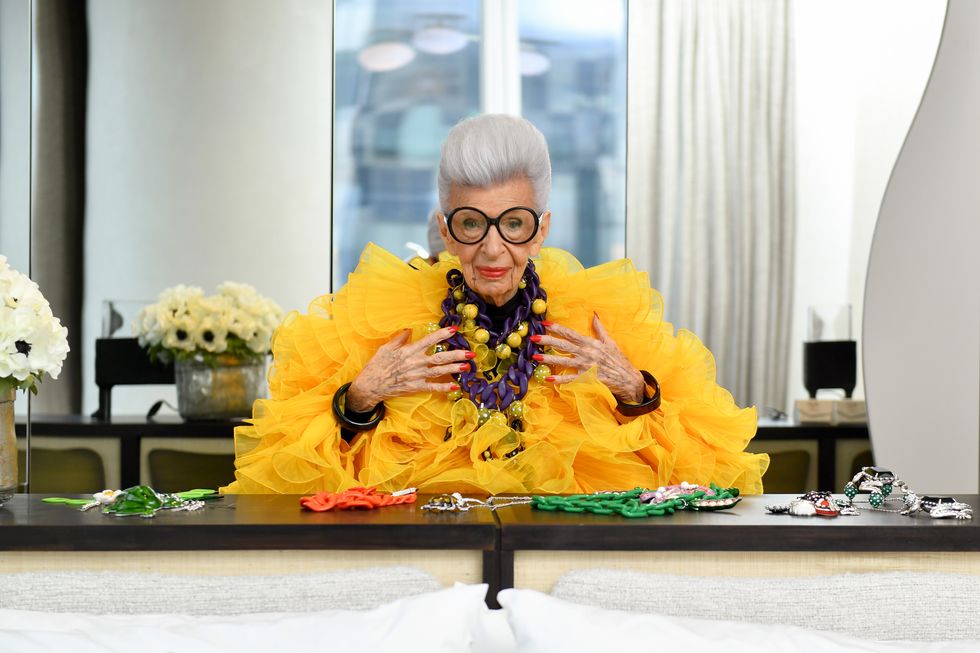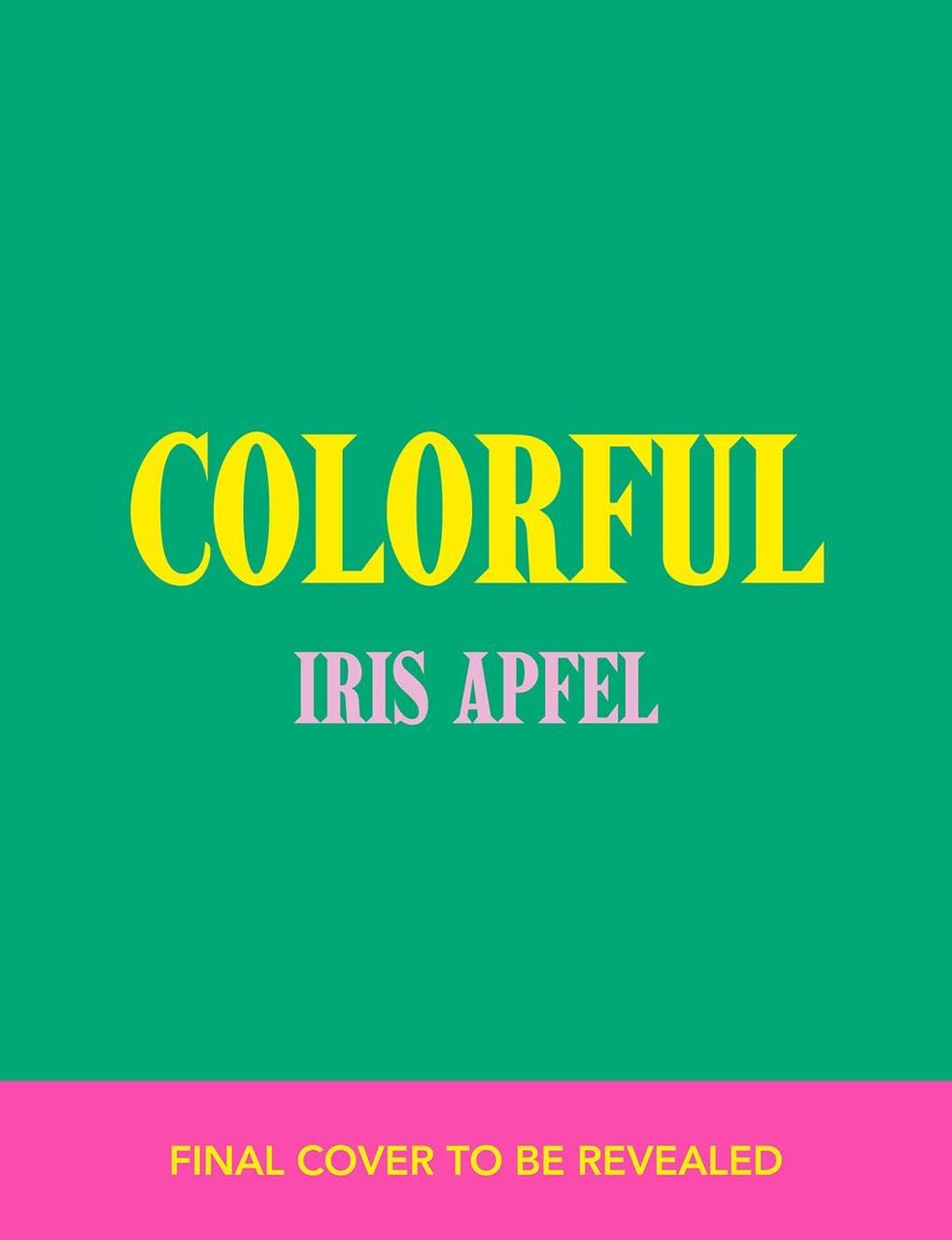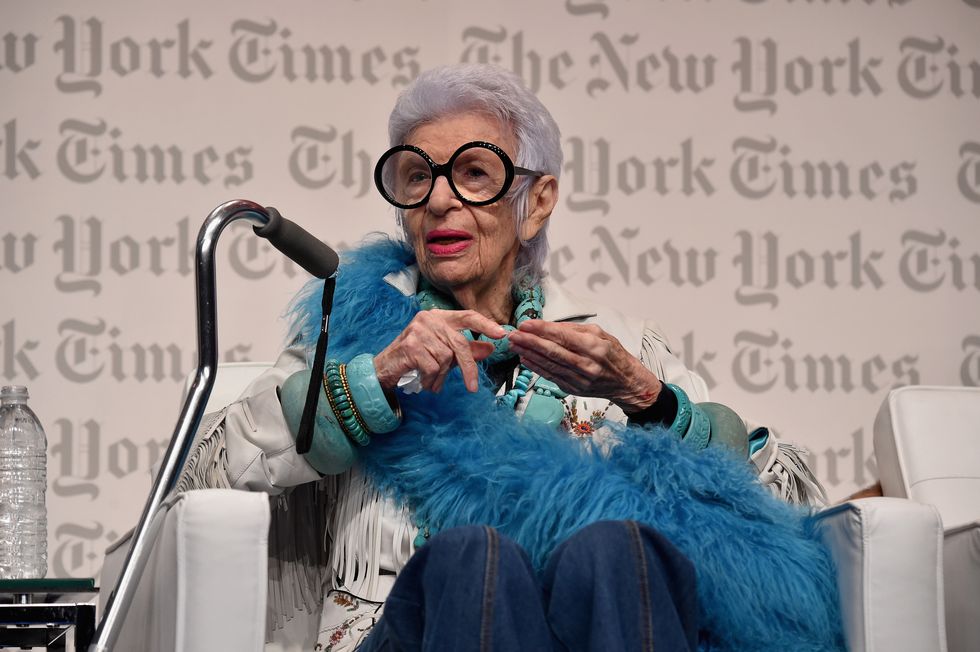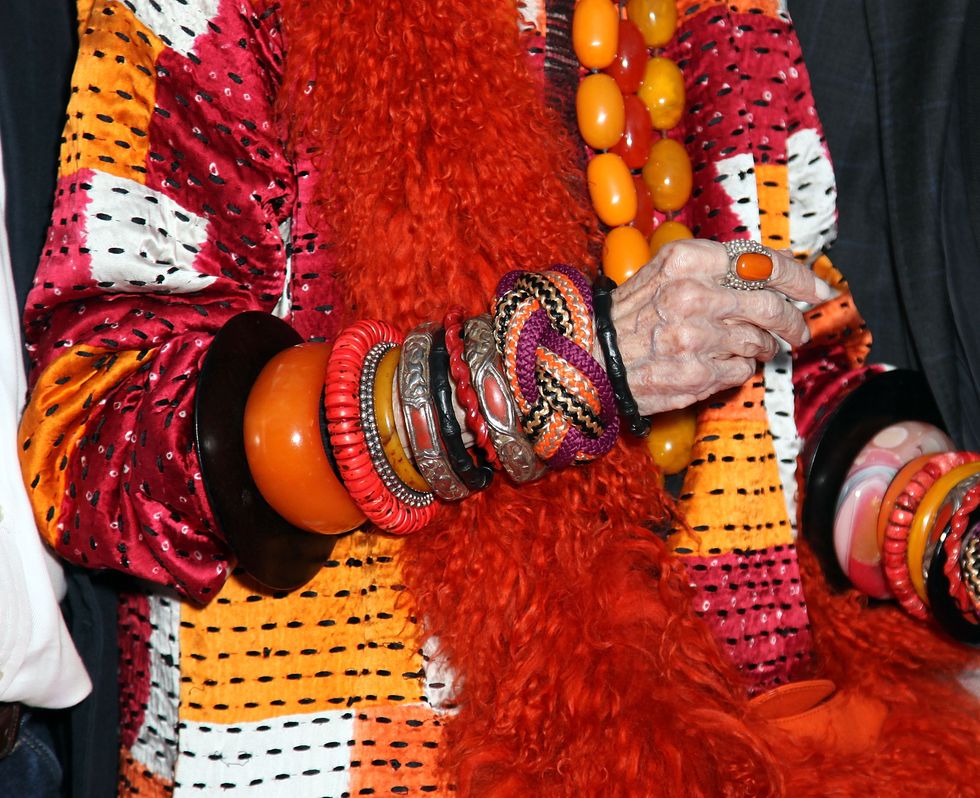Style Points is a weekly column about how fashion intersects with the wider world.
When she was young and impressionable, Iris Apfel received a backhanded compliment that would change her life. She was told by a department store owner that, well, she wasn’t pretty. But the woman quickly softened the blow. “You have something better. You have style.”
The fashion icon, interior designer, and collector, who passed away at the age of 102 on Friday, took that feedback to heart. Growing up in Queens during the Great Depression, with a boutique owner mother who, she recalled, “worshiped at the altar of the accessory,” she grew to love the idea of adorning herself. She headed into the city to trawl Greenwich Village junk shops for treasures. What she couldn’t find, she’d DIY, long before the acronym was common currency. In a sense, her image itself was a DIY project: cobbled together in classic magpie fashion.
Her horizons broadened further when she married Carl Apfel and the two started their textile business, Old World Weavers, whose clients included Greta Garbo and nine U.S. presidents. These tastemakers demanded one-of-a-kind items, things nobody else would have, and so the two began taking biannual sourcing trips to Europe abroad. Apfel became an expert haggler, her gimlet eye drawn not to the most expensive items but to the most distinctive. (She brought a 40-foot container to haul back her spoils from each trip.)
By then, Apfel had settled on the maximalist, take-no-prisoners personal style she became known for. Flouting Coco Chanel’s advice to take off one accessory before you leave the house, Apfel piled on more and more: Owlish, oversized glasses. Fluorescent boas. Prints mixed with abandon. Stacked bracelets that were more arm orgy than arm party. She took her place in the grand tradition of eccentrics, from Marchesa Luisa Casati to Diana Vreeland.
As the cult of “personal style” grew, Apfel became a prized practitioner. A Met Costume Institute show in 2005, “Rara Avis: The Irreverent Iris Apfel,” first brought her to the attention of the larger public. It was the first time a single person’s wardrobe had been the subject of such a retrospective. “Life is gray and dull,” she said while promoting the show, “and you might as well have a little fun when you dress, and amuse people.”
Her career ran counter to the usual ageist cycle of fashion: When she hit big as an It girl, she was already in her 80s and calling herself a “geriatric starlet.” Designers loved her, and she became a front-row fixture, eyeing the new fashions with rapture even as those decades her junior looked blasé. At age 97, she signed with the modeling agency IMG.
Her cult of personality spawned coffee-table books, an H&M collaboration, and a 2014 documentary, Iris, by legendary filmmaker Albert Maysles, who’d previously trained his lens on the fashionable eccentrics of Grey Gardens. She told the filmmaker that when getting dressed, “I like to improvise. I always like to think I’m doing things as though I’m playing jazz. Try this, try that.”
Amid so many style rules and stuffy ideas about how you “should” dress at a certain age, Apfel stood out. “I like individuality. It’s so lost these days,” she told Maysles. In today’s milieu of quiet luxury and all things bland, neutral, and safe, her style statements feel even more rebellious. Her version of luxury was far from quiet: it shouted, exuberantly, across a room. Like so many style icons, she fashioned herself.






